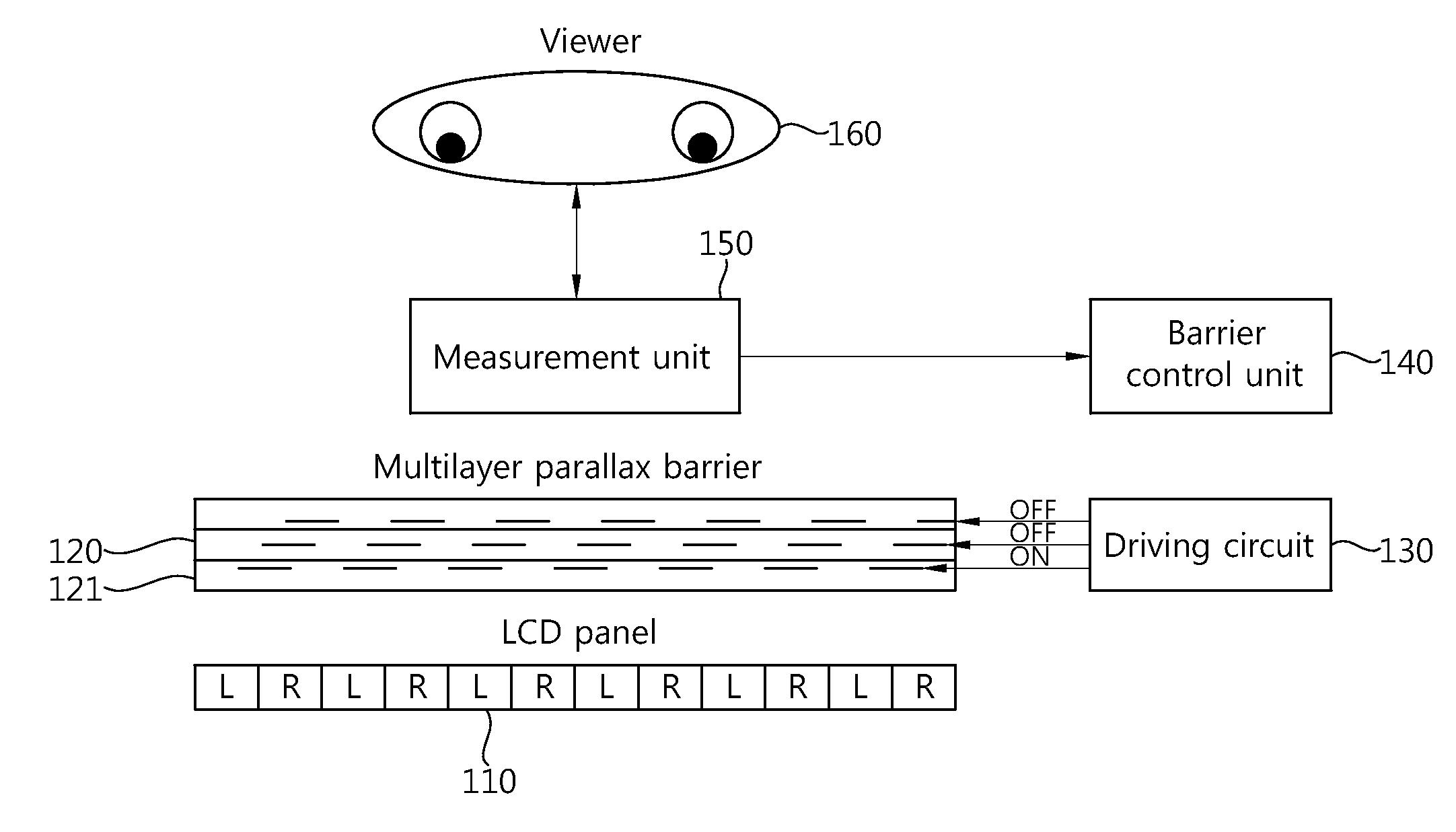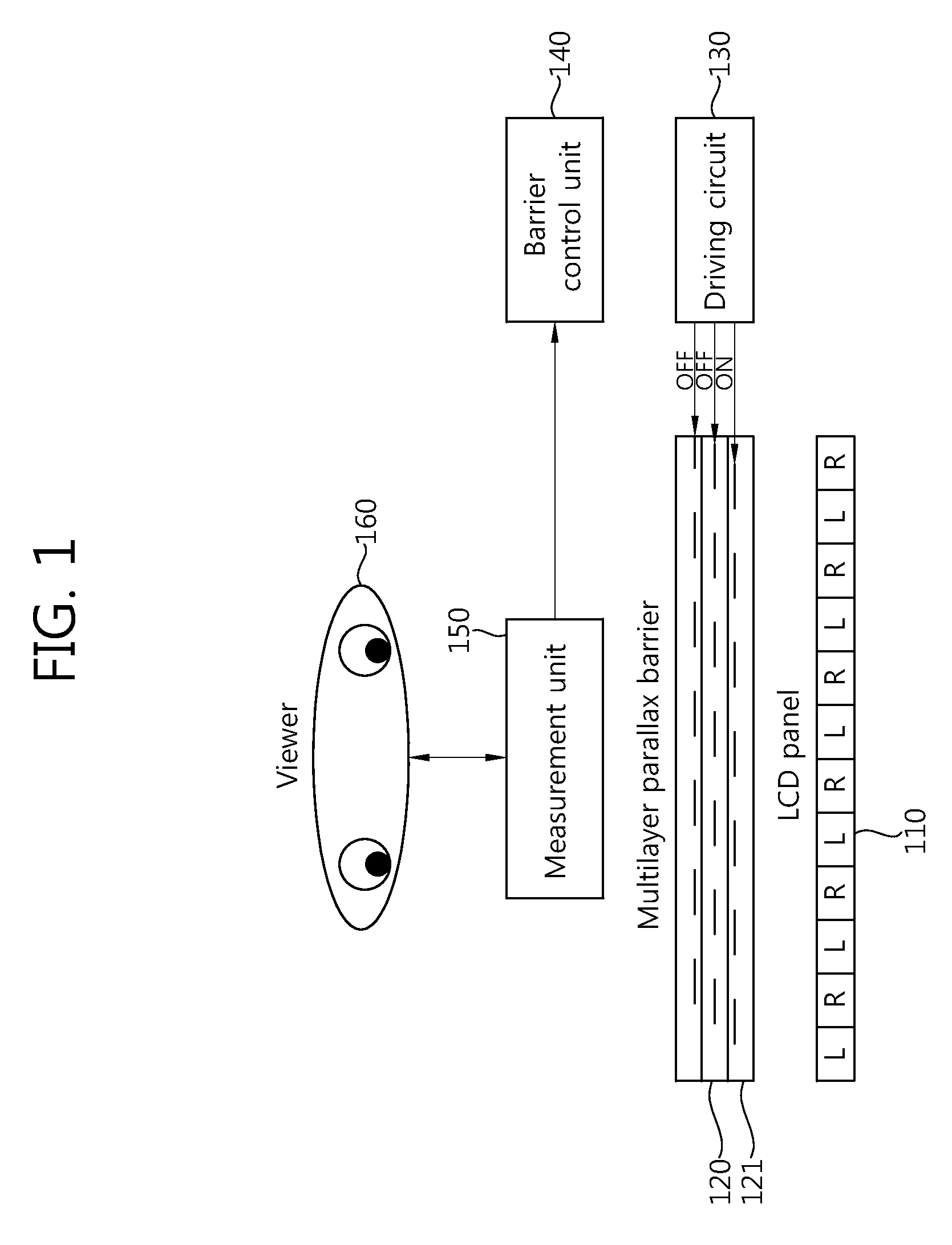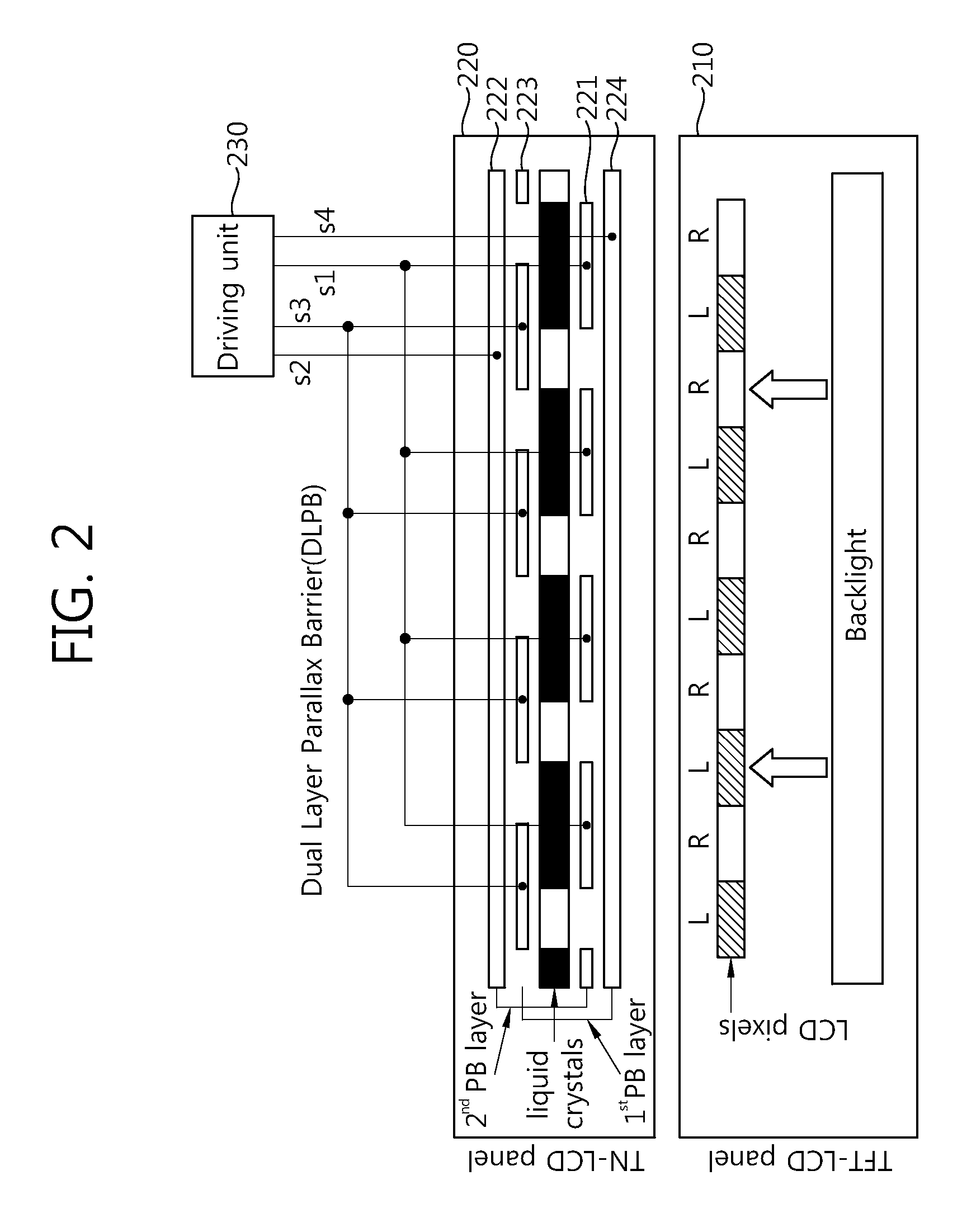Segmented dual layer parallax barrier-based 3D display device and method
- Summary
- Abstract
- Description
- Claims
- Application Information
AI Technical Summary
Benefits of technology
Problems solved by technology
Method used
Image
Examples
Embodiment Construction
[0037]The present invention may be variably modified and may have various embodiments, particular examples of which will be illustrated in drawings and described in detail.
[0038]However, the present invention is not limited to the specific embodiments and should be construed as including all the changes, equivalents, and substitutions included in the spirit and scope of the present invention.
[0039]In the description of the embodiments of the present specification, if detailed descriptions of related well-known constructions or functions are determined to make the gist of the present invention unclear, the detailed descriptions will be omitted.
[0040]Terms such as ‘first, ‘second’, etc. can be used to describe various components, but the components are not limited to the terms. Terms described in the specification are used to discriminate one component from other components. For example, the first component may be called the second component without departing from the scope of the pre...
PUM
 Login to View More
Login to View More Abstract
Description
Claims
Application Information
 Login to View More
Login to View More - R&D
- Intellectual Property
- Life Sciences
- Materials
- Tech Scout
- Unparalleled Data Quality
- Higher Quality Content
- 60% Fewer Hallucinations
Browse by: Latest US Patents, China's latest patents, Technical Efficacy Thesaurus, Application Domain, Technology Topic, Popular Technical Reports.
© 2025 PatSnap. All rights reserved.Legal|Privacy policy|Modern Slavery Act Transparency Statement|Sitemap|About US| Contact US: help@patsnap.com



